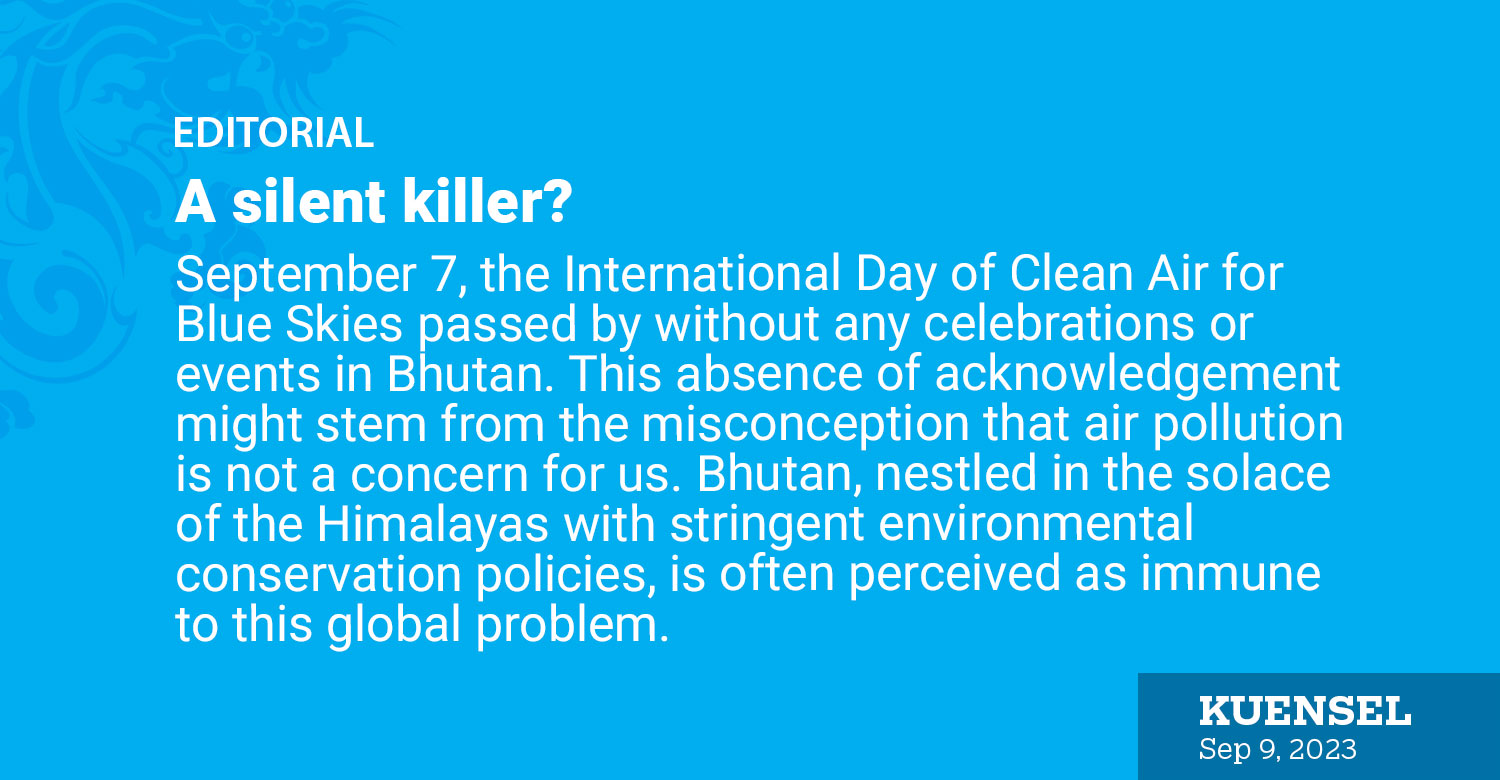September 7, the International Day of Clean Air for Blue Skies passed by without any celebrations or events in Bhutan. This absence of acknowledgement might stem from the misconception that air pollution is not a concern for us. Bhutan, nestled in the solace of the Himalayas with stringent environmental conservation policies, is often perceived as immune to this global problem.
Ironically, air pollution poses a threat. Air pollution is a genuine concern, and a few dry days can swiftly bring this issue to light. A light shower on Thursday evening served as a reminder, settling the dust that had accumulated in the capital city. Without these showers, many would have experienced the discomfort caused by the heat and dust.
Contrary to the prevailing myth that Bhutan is an oasis of cleanliness, our air quality is deteriorating. Factors such as the increasing number of vehicles, pollution from forest fires, and the use of heating devices have contributed to the contamination of our air. This problem is exacerbated during the winter months when precipitation is scarce, failing to cleanse the atmosphere of particulate matter.
Our ongoing efforts to safeguard the environment are commendable, but they fall short in addressing the menace of air pollution. Scientific research on the transboundary sources of PM2.5 in the capital city affirms that events in the plains of India and Nepal directly affect air quality in Thimphu.
The International Day of Clean Air for Blue Skies aims to scrutinize the impact of poor air quality on South Asian populations and explore solutions to mitigate the health risks associated with air pollution. This issue is relevant to Bhutan, despite our belief in breathing the purest air. The study reveals the severity of air pollution in Thimphu, with the average concentration of PM2.5 levels surpassing the WHO-recommended standards by threefold.
The primary threat arises from escalating vehicular emissions year-round, with occasional forest fires, heating facilities, and agricultural activities compounding pre-monsoon air pollution. While we can employ modern technologies and concerted efforts to control the emission of harmful gases, many challenges remain beyond our control. The quality of the air we breathe is intricately linked to what transpires in neighbouring states and countries.
Scientific research found that transboundary sources are the major contributors to the total PM2.5 levels in Thimphu. Approximately 94 percent of wind trajectories originate from Indian states such as Sikkim, Assam, Meghalaya, northern West Bengal, the northern parts of the Indo-Gangetic Plain, northern Bangladesh, and Bhutan itself, all contributing to pollution.
This calls for global or regional attention to address air pollution. While we may not have documented the number of lives lost due to air pollution, it remains the most significant threat to global life expectancy. Similar to the impacts of climate change, our confidence in strict environmental conservation policies is undercut by the undeniable fact that developments in the foothills directly impact us.
Given that air pollution is the single greatest environmental risk to human health and a major avoidable cause of death and disease worldwide, it is imperative that we unite in the fight for cleaner air. Air pollution is called the silent killer. And like many global challenges, cannot be tackled by a single nation. South Asia, often labelled as one of the largest contributors to air pollution, must grapple with questions like: How can we address it or how will it affect us? Above all, how do we save ourselves when we are not at fault?


